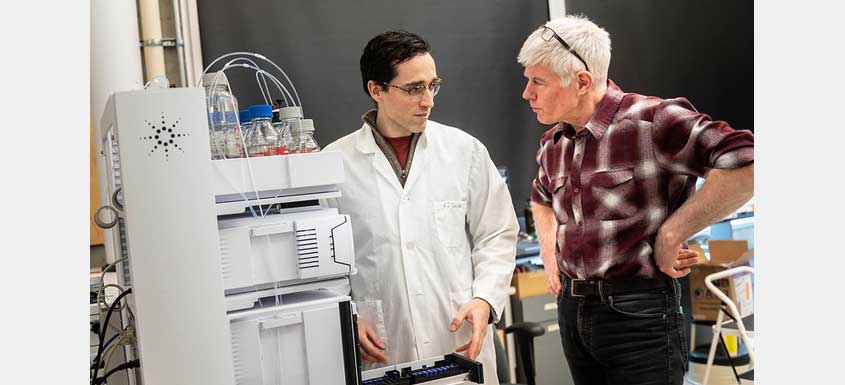SASKATOON – Getting more useful products out of renewable resources like wood is the goal of scientists who are using Canada’s only synchrotron.
Dr. Lindsay Eltis, a professor in the Department of Microbiology and Immunology at The University of British Columbia, and his team are studying how bacteria transform wood-derived compounds into useful chemicals. Harnessing this process could lead to new, eco-friendly biotechnologies.
The researchers used the Canadian Light Source (CLS) at the University of Saskatchewan (USask) to study an enzyme that breaks down the ring structures found in lignin, a major component of the woody biomass that is burned by the pulp and paper industry.
Using synchrotron technology, the team was able to visualize and describe this enzyme for the first time. Their results were published in the Journal of Biological Chemistry.
Eltis believes that bacteria represent a greener way of doing things. Instead of burning lignin, it could be converted by bacteria into chemicals that are usually generated by the petroleum industry
“Bacteria can transform an underutilized by-product of the paper industry into useful biomaterials like nylon and help create a ‘circular bioeconomy,’” he said.
“One of humankind's goal moving forward is to reduce our carbon emission,” said Eltis. “Being able to transform renewable resources would really go a long way to achieving some of these goals.”
The Canadian Light Source (CLS) is a national research facility of the University of Saskatchewan and one of the largest science projects in Canada’s history. More than 1,000 academic, government and industry scientists from around the world use the CLS every year in innovative health, agriculture, environment, and advanced materials research.
The Canada Foundation for Innovation, Natural Sciences and Engineering Research Council, Canadian Institutes of Health Research, the Government of Saskatchewan, and the University of Saskatchewan fund CLS operations.
Source: Canadian Light Source (CLS)













